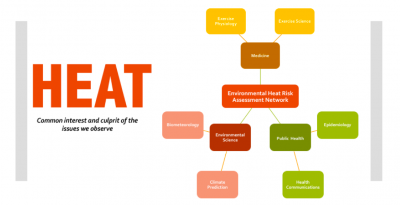Korey Stringer Institute Medical and Science Advisory Board Member
Yuri Hosokawa PhD, ATC

As one of my last tasks as the Vice President of Education and Communication, I attended the 98th American Meteorological Society (AMS) Meeting in Austin to present at the joint session, Informing Heat-Health Practitioners to Reduce Risk through Impact-Based Decision Support. The first half of the session was comprised of case study presentations that showcased the use of weather data, such as the wet bulb globe temperature (WBGT), to conduct health risk assessment in public health, occupational health, and athletics. While there still remain limitations in deducing the association between WBGT and health outcomes, use of weather data to make informed decisions for future heat events to minimize its adverse effects on health, economy, and productivity are being investigated across the U.S.A continued effort in observational and intervention-based studies are warranted to identify successful models.
Presentations included in the latter half of the session, including my presentation from the KSI, were reports from current initiatives supported by the National Integrated Heat Health Information System (NIHHIS). The NIHHIS is being developed by the Centers for Disease Control and Prevention (CDC), the National Oceanic and Atmospheric Administration, and domestic and international partners to understand this problem, develop a robust and science-informed response, and build capacity and communication networks to improve resilience. My presentation at the session featured KSI’s on-going inter-agency collaboration in drafting a round table document among athletics, military, and occupational settings to use WBGT for activity modifications in the heat. Other NIHHIS projects featured in the session included a project lead by the National Oceanic and Atmospheric Administration in North Carolina that investigated the use of web-based forecasting tool (Heat Health Vulnerability Tool) by community stakeholders and the Hot Spots project, which aimed to increase the heat resilience in Mexico border region through education and evidence-driven public health interventions.
As depicted by presentations in the session, a successful environmental heat risk assessment requires an inter-agency and interdisciplinary network. Projects led by NIHHIS provide great examples for others to follow, and it is no doubt that exercise physiologist and athletic trainers play integral roles in examining the impact of heat.